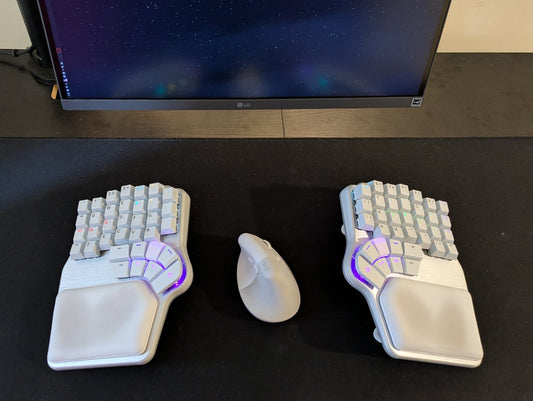Do you know what affects 1 in 3 gamers worldwide?
It might affect you now, or it might affect you sometime in the future.
And we're not saying the Dygma Raise is the be-all and end-all, but it can definitely help those affected.
If you would like to watch the full interview then check it out here!
A few days ago, I met with one of our Dygmates, Elisabeth, a disabled and chronically ill content creator who gave us some interesting insights about accessibility in computer peripherals.
She's shed light on the fact that up to 30% of gamers worldwide are affected by some form of disability or impairment.

There's a certain stigma, at least in our experience, that's tied with the word 'accessibility'. People tend to associate that word with the medical field or senior citizens.

But, as Elizabeth said, accessibility is something that benefits us all.
The ramps on sidewalks for wheelchairs are used not only for those in wheelchairs, but also for prams, suitcases, bikers or skaters. In gaming, when you're watching the storyline, there are always subtitles or the option to enlarge texts.

Accessibility is more than just a disability.
It's to enhance comfort and your overall experience when typing or gaming. It's to lower the barriers for everyone to be able to enjoy the game.
How did she learn about the Dygma Raise and how has The Raise helped her?
This interview was so important to us because we learned a lot about how we can help the disabled community.
In some way, we were previously ignorant of how much of a role we can play in this field. But we've now gained plenty of inspiration to work more in aiding this community.

Unfortunately, this is not seen as a priority for many mainstream brands, leading those affected with disabilities to feel as if they don't have enough impact.
But can every game be made accessible to everyone?
Well, unfortunately, the answer is that not everything can be 100% accessible. But at the same time, nothing can be 0% accessible.
Of course, there will be some barriers that companies aren't able to tackle because of the limitations of the design and manufacturing.

But what is important is that manufacturers take the time to listen to their users, provide options, and give the possibility for the widest range of users to enjoy their product.
There may be only a few options for accessibility in computer peripherals. And if there are, they may look like they only belong to a hospital.

But it is refreshing to see that more and more companies, designers, and people, in general, are becoming more aware of the true meaning of accessibility.









